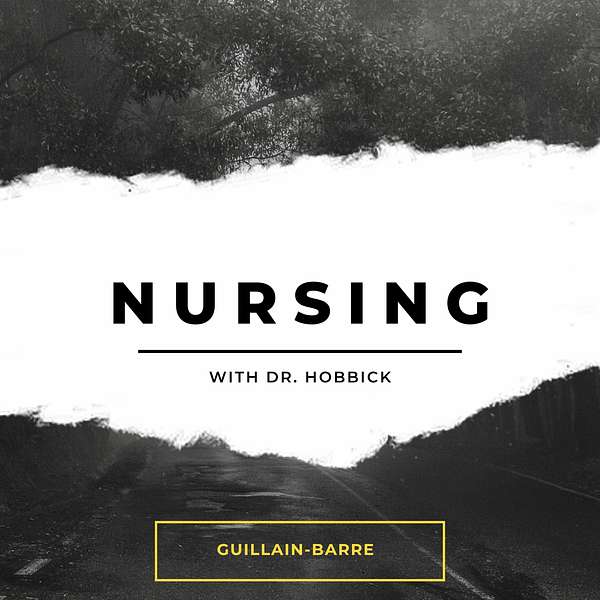
Nursing with Dr. Hobbick
In each episode, we'll dive deep into the core subjects that you encounter in your nursing classes. From fundamental concepts to advanced topics, we'll break down complex ideas into understandable and relatable discussions. As a nursing professor, my goal is to bridge the gap between classroom theory and real-world practice, ensuring you're well-prepared for the challenges and opportunities that lie ahead.
Join me as we explore essential nursing theories, patient care strategies, healthcare ethics, clinical reasoning, evidence-based practice, and much more. I'll draw upon my extensive experience in both nursing education and practical nursing to provide you with a comprehensive perspective that goes beyond the textbook.
This podcast is your companion on your journey toward becoming a proficient and compassionate nurse. Tune in regularly to gain valuable insights, enhance your understanding, and connect with the dynamic world of nursing. Whether you're commuting, studying, or simply seeking to expand your nursing knowledge, "Nursing with Dr. Hobbick" is here to support you every step of the way.
Subscribe now to embark on this educational adventure with me. Together, we'll navigate the intricate landscape of nursing education, empowering you to thrive as a skilled and confident nursing professional.
Nursing with Dr. Hobbick
Guillain Barre
What if your life was suddenly disrupted by a mysterious condition that started in your legs and gradually progressed to your face, causing numbness, tingling, and in severe cases, paralysis? This is the reality for patients suffering from Gilan Boree, a baffling syndrome that we explore on this episode of Nursing with Dr Hobbock. After a closer look at this perplexing syndrome, thought to be triggered by a viral infection, we lay bare the consistent patterns of its manifestation, starting from the legs, and progressing to the upper extremities, the trunk, and the face.
From tingling and numbness to complete paralysis affecting crucial functions like talking, chewing, and swallowing, the insidious nature of this condition is alarming. However, the real danger is in its ability to cause respiratory failure, which is why this episode focuses on recognizing the key indicators of this potential outcome. We delve into the crucial role of monitoring patient respirations and discuss the potential for rapid development of weakness or paralysis of the intercostal and diaphragm muscles. As we wrap things up, we further stress the need for vigilance in patient monitoring and prepare listeners to deal with possible respiratory distress and the potential need for mechanical ventilation.
Hey and welcome to Nursing with Dr Hobbock. I'm thinking about Gilan Boree. That is a condition that is named after two French doctors, and I apologize to anyone who speaks French who hears my pronunciation I am not super great at pronouncing French. I really need to practice, but hopefully you'll forgive me. This is a syndrome we don't really understand well and it involves peripheral and cranial nerves. What usually happens is a patient gets a viral infection, either a respiratory or a GI infection so think influenza virus or some other type of virus and about one to four weeks after that they start to have neurological deficits. These neurological deficits typically follow a pattern. It usually starts in the patient's legs and progresses to the upper extremities, the trunk and the face, and this is a peristhesia. They might have tingling and numbness. They may have some paralysis, maybe ocular, facial, oral, pharyngeal muscles. This is going to make it really hard for them to talk or chew or swallow.
Speaker 1:Your priority for this patient is to monitor their respiratory status because if those respiratory muscles get affected, this patient can go into respiratory failure. So we need to constantly monitor them for respiratory failure. Most patients about 70% will have a full recovery within several months to a year after the onset of symptoms, around 30% are left with a residual disability and about 5% fortunately pass away. So what are you looking for when you're watching for that respiratory failure? You're watching for breathlessness while they're talking, shallow or irregular breathing, use of accessory muscles, any change in their respiratory pattern. Make sure that your whoever is measuring respirations is actually measuring them. I can't say how many times I've gone in and seen a patient who had 16 respirations. The entire time they've been someplace and only to find out it was actually in the 30s. So make sure that you talk with whoever you delegate that to then make sure that they are really checking those respirations. I try to harp on that with my students, with my face-to-face students, because respirations is something that will change really quickly. So if something is going on with the body, you'll see change in those respirations much earlier than you would think.
Speaker 1:So keeping an eye on them is really important. Any paradoxical inward movement of the upper abdominal wall well, in the supine position, that indicates weakness or impending paralysis of the diaphragm. So I want to make sure that we are watching for those things. Any changes in pulse rate or rhythm. They may have some transient hypertension or orthostatic hypotension could have some pain in their back and their calves of their legs, and weakness or paralysis of the intercostal and diaphragm muscles can develop quickly. So again, we are keeping a very close eye on these patients. We want to monitor for that respiratory distress and initiate mechanical ventilation if it's going to be needed. That's the quick rundown on Gilan Berre and I hope that you enjoyed this short, short episode. Join me again next time on Nursing with Dr Hobbock.
Podcasts we love
Check out these other fine podcasts recommended by us, not an algorithm.

.jpg)